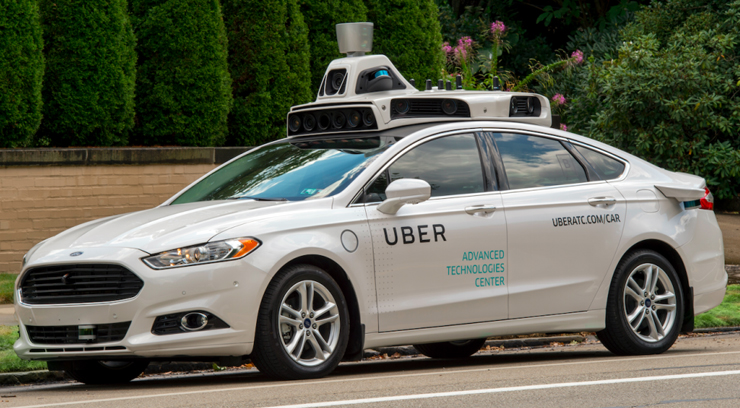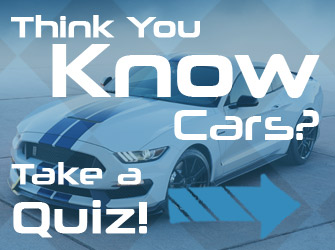Pros & Cons of Autonomous Cars

Like it or not, autonomous cars are the future of the new car scene. Enthusiasts might cringe at the thought of “driving” these vehicles, but the sad truth is that most car buyers aren’t enthusiasts. The same reason the Toyota Camry and Nissan Rogue sell in large numbers, is the same reason driverless cars are coming to market and will sell well: most people don’t want to drive.
Like when EFI replaced carburetors, this will not be an option. In another generation, even the Mazda MX5 Miata is likely to have mandatory features that take some of the responsibility of commuting away from the driver. Forgot to look over your shoulder or check the mirror when changing lanes? Don’t worry, the blind spot detectors are working, and will communicate the proper actions to the electric steering, so you won’t be able to sideswipe that minivan. A light on the gauges will let you know when you have full control back (if you behave), or you can leave it in auto-drive, and go back to texting.
Before we get to that Blade Runner future, we’ve got to survive this first round of robot cars. Let’s examine some pros and cons of the current and upcoming autonomous vehicles.
Pros:
Less accidents, less deaths. — The Wall Street Journal published a piece last year documenting how autonomous vehicles would reduce traffic accidents by an incredible 90 percent. Hundreds of billions (yes, with a B) would be saved each year, as well as over 20,000 lives. That is massive.
Save some cash — Insurance rates will drop, due to less people injured, and far fewer vehicles being damaged and needing repairs. Shipping rates will drop too, as trucks will be more efficient and on time. Actually, anything that was driven by a person, like cabs and pizza delivery, is now much faster and more reliable.
Everyone wins with the cash savings.
Less fatalities and injuries. – This one is nice for anyone that is currently alive and plans on staying that way. We’re not just talking drivers and passengers here, but pedestrians are less likely to be hit by an autonomous car compared to a driven one. The streets become much safer.
Get to work! — Employers love autonomous cars, as employees will be on time. It will let you know long before it needs maintenance or gas, or if there’s potentially a train blocking your route. No excuses here, you just plain woke up late.
No road rage. – Do you get mad at other drivers? If you’re like most people, it might happen sometimes. Do you get mad at traffic lights, and give them the finger? Probably not. You won’t get mad at a driverless car and give it the finger, since the computer won’t care or even see it. Instant Zen driving.
Grandma can come visit you. – Okay, depending on your grandma, this might be a con. Still, there’s no arguing that at a certain age, it’s time to hang up the keys. With an autonomous car, Grandma can still hit bingo night, without the need to sucker you into it. On a more serious note, freedom of movement adds a lot of quality of life, even if it’s just running to the grocery store or medical appointments.
Less traffic. – Driverless cars won’t be caught in traffic jams. Since they will be communicating with each other, and with the surrounding road signals, smart roads and construction equipment, the car will understand the road ahead before the driver can even see it. A fully autonomous highway could be high speed (100 mph) and high density (1 meter separation between cars), with zero traffic accidents.
Multitasking is actually safe. — Stay updated on social media, text your spouse, play Candy Crush Saga, read, eat, or shave. No one cares, as they’re doing it too. Commuting sucks. Sleep for a bit, as you’ve finally got some quiet time to yourself.

Not everything is sunshine and Lotuses on track day. Critics, and some wary potential buyers, have pointed out several issues with letting go of the steering wheel. While there seem to be less drawbacks than benefits, there are some points worth considering.
Cons:
More automation means more parts, and more parts made or designed by imperfect humans means more parts that will fail. Sure, sensors, cameras, radar and the like are all old school and reliable tech, but we don’t expect them to grind out 15,000 hard miles every year for over a decade. Those cameras will become twitchy after 8 years of coastal Washington rain, or a decade of furnace-like Phoenix heat. As an example, look to a 10 year old infotainment system in a used car. How’s that holding up? Trust it with your life?
Then there’s the higher initial cost. See the above? Yeah, all that stuff costs money. Research and development is a huge budget hole that can swallow hundreds of millions of dollars and still be unable to come up with a satisfactory self-driving car. When it finally does reach the market, 10 years and 5 billion dollars later, you can bet the automaker is going to price it accordingly. Automation will not be allowed to eat their profit. In short, prices are going up. And not just for fully autonomous cars, or just with that option; all cars, even without an auto-drive feature, will be increasing in price, in order to pay for the autonomous cars. Don’t believe it’s that bad? Go price a new F-150. I just spec’d one out to over 70 grand. Ouch.
Finally, there’s the enthusiast assumption that driverless cars are less driver-oriented. The media has hyped it to death in the last ten years or so about how millennials don’t like cars, or aren’t into driving. Based on trips to the drag strip, autocross, and car shows, we’d have to disagree. However, the push for autonomous vehicles does make us pause and reconsider the future of the automotive hobbies. If you aren’t actually driving it, do you have a connection? Probably not, as I don’t know too many people that are all hyped up for the latest commercial plane, train or bus news. Not a whole lot of Coffee & Cruise Ships gatherings out there. No one cares about people movers. Well…maybe the Hyperloop, but that’s it. A self-driving car is a very useful mobility device, and is the perfect solution for some people, but it’s also not quite the same amount of freedom as a traditional vehicle.
So what’s the final verdict on driverless cars? Yeah, that’s kinda the trillion dollar question, so we’d like to know too. There is certainly a need, and many benefits to autonomous cars, but on the other hand, the current technology doesn’t quite seem ready for full autonomy all the time. Case and point, a Florida Tesla Model S driver killed in crash with Autopilot active. With new tech like self-parking, and collision avoidance in showrooms now, there’s no denying it: driverless cars are the future.



















